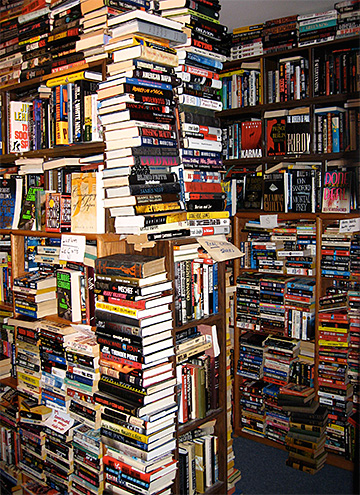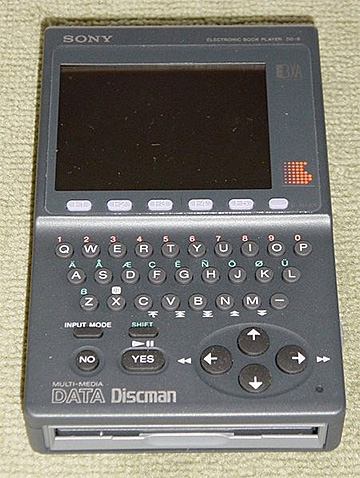


"It is not the strongest of the species that survives, nor the most intelligent that survives. It is the one that is the most adaptable to change."
Charles Darwin (1809-1882)
For nearly two decades, the world has been undergoing such a swift and severe change as a result of the internet and technology, that one can easily be left behind, wondering what happened to the world we thought we knew and understood. Recently, I overheard a father and a son, in which the man admonished his boy, “Give it a rest! You sound like a broken record!” There was a short silence and then, “Daddy, what is a record?”
I myself grew up with books and records, and saw the age of the CD ushered in as the pinnacle of digital technology, yet nowadays the idea of a fairly large piece of plastic storing a mere 60 minutes of music is almost a joke in today’s age of iPods, MP3 players and smartphones, where thousands of hours of music are carried around everywhere we go. As a result, we have witnessed an epidemic of music stores closing shop.

The granddaddy of MP3 players: it was tough work jogging with one of these attached
to your arm.
Still, recorded music has only been around since the late 19th century, whereas books on the other hand quite a bit longer. Is this to suggest that printed books are also a dying breed? Not suggest, state. If you have not yet accepted this reality, then it is time to smell the coffee. Printed books may continue to be produced for 100 years to come, but they will be the oddball collectible, the coffee table decoration. As the standard means of storing and distributing books and literature, their days are numbered, yet lovers of the written word need not despair, for it is neither the end of writing nor literature, but merely a metamorphosis into a new medium of distribution.

Evolution and change can be painful processes
The equally astonishing extinction of books stores and publishers has left many a reader shell-shocked, and it is no less true for chess fans who have witnessed industry giants, such as Batsford, close their doors. Is the end of chess publishing only a matter of time? No, absolutely not, and their transformation is also underway by the adaptable group left standing, energetically ensuring that chess literature will not disappear any time soon. It is not the beginning of the end, but the end of the beginning.
Reading my first ebook
Before you conclude that I am of the new generation of readers whose heralding of the ebook is in any way due to a relatively modest personal history with printed books, let me assure you that nothing could be further from the truth.
I first learned to read at an extremely precocious age, and was devouring books faster than my parents could buy them by the time I was in first grade. As a teenager, I regularly lunched on bread and water, saving the bulk of my lunch money to feed my reading frenzy every two-three days with something fresh. You can imagine the consequence, aside from my near anorexic appearance at the time: my shelves were stuffed with books three layers deep, and boxes were soon filled to make room for more. The day it came to get rid of some was one of indecision and lower lip-biting. It was torture.

Books, books, glorious books: where to put them all?
My first attempt to read a complete book in digital format was a couple of years after the Internet explosion, and while successful, reading on a laptop was tedious overall and just wasn’t the same. I wanted to make it an enjoyable experience, worth repeating, so I tried sitting up in a bed, loafing on an armchair, but the laptop became hot and heavy over time. I concluded that although texts might become digitalized, as a reading experience the printed book was in no danger yet. Then came the iPad and the Kindle, and whether for web-browsing, or reading books, the new form-factor was a massive hit, with repercussions reverberating everywhere.
A brief history of ebooks
Ebooks predate both devices by quite a lot, and were actually born in the 1970s. Many people may have heard of the Project Gutenberg, the largest and most famous resource of public domain texts in the world, but they may not realize that its founder is also the father of the ebook itself. The idea had certainly been discussed since the 1940s, but the actual implementation was first born in 1971 by Michael Hart, an operator of the Xerox Sigma V mainframe at the Materials Research Lab at the University of Illinois, who conceived Project Gutenberg, and created the first electronic document, the US Declaration of Independence. This was merely the first step, and the goal was to convert the world’s great books available in public domain to be readily read by all. Today it has helped digitalize and distribute over 42 thousand books, in their original languages and multiple translations, from the Bible and the Al-Qur’an, to the complete works of Shakespeare and Goethe.

Visionary Michael Hart, founder of Project Gutenberg, first created
and distributed an electronic version of the US Declaration of
Independence on the...

...Xerox Sigma V mainframe in 1971.
Although a vital first step, one need not say that Xerox mainframes were hardly common mainstays in people’s homes. To truly become a popular source for all, a means to read them would need to be developed and gain widespread acceptance.
Interestingly, the first mass adopters of digital books were the US military. In the early 90s, before the Internet became a worldwide phenomenon, a massive series of projects was initiated to digitalize the technical manuals of their aircraft and other machinery. They had a very practical reason for this in spite of the astronomical cost (initially $130/page): weight. A US Navy aircraft carrier would sink under the weight of its complete tour of duty paper maintenance manuals, and the initial result of the process allowed the aircraft carrier to rest 15 centimeters higher in the water.

A compelling argument in favor of digitalization: the world's largest warship ever built
would sink under the weight of its own tour-of-duty
maintenance manuals.
The first consumer ebook reader to hit the market was Sony’s Data Discman in 1992, and though a fascinating gadget, and ahead of its time, it failed to jumpstart the ebook market. Little by little, new readers came out, and some publishers began to see the impending tidal wave from afar. In 2002, publishing heavyweights Random House and Harper Collins began to publish digital versions of their titles in English.

Ahead of its time: Sony's Data Discman
in 1992
The real change of the tide can be identified in two distinct steps: the first was the arrival of Amazon’s Kindle ereader in 2007, a small lightweight device that made ebook reading what it was meant to be. The difference was not so much the device though, as the full backing of the online giant Amazon that followed it up by a powerful effort to bring as many titles as possible to the digital medium. Today there are nearly two million publications available in Kindle format, which does not include others that might not be.

In a one-two punch that started the ebook avalanche, the Kindle,
launched in 2007, was the first part of the knockout combination.
The second would be the iPad by Apple. Though the iPad was not synonymous of frenetic ebook reading in itself, it made the tablet a byword and instantly desirable, and the sale of over 100 million units since its introduction in 2010 says it all. This has led to a deluge of tablets, most with seven-inch or ten-inch screens, of which over 122 million units were sold in 2012, including over 52 million in the fourth quarter alone. With hundreds of millions of tablets owned and sold around the world, all with a wide range of free ereader software readily available, the stage for the ebook revolution is set.

The second part was the incredible success of the iPad, first
introduced in 2010, that has led to hundreds of millions of tablets
sold. Suddenly the
market was ripe for large-scale ebook consumption.
A booming business
The result of this is illustrated by Amazon’s numbers: In 2010, Amazon announced that ebooks were already outselling hardcovers in number of books. In 2011, ebooks as a principal represented close to $100 million dollars in profit, then in 2012 this number more than doubled, while the entire global industry is reported to have garnered $854 million. The forecast is that 2013 will more than quadruple the 2011 profits, and in 2015, Amazon is expected to earn a net profit of one billion dollars in ebook sales alone.
So how is the ereading experience today, and more specifically chess ebooks? In part two, I will look at all this and more.